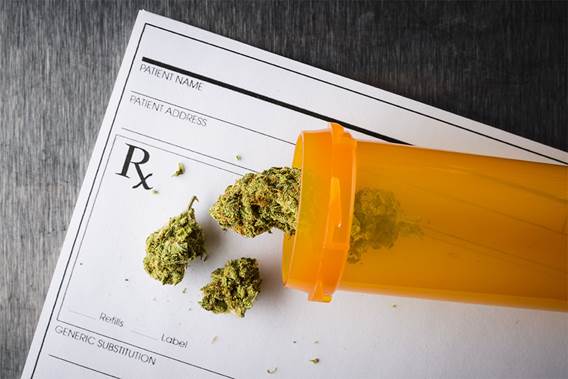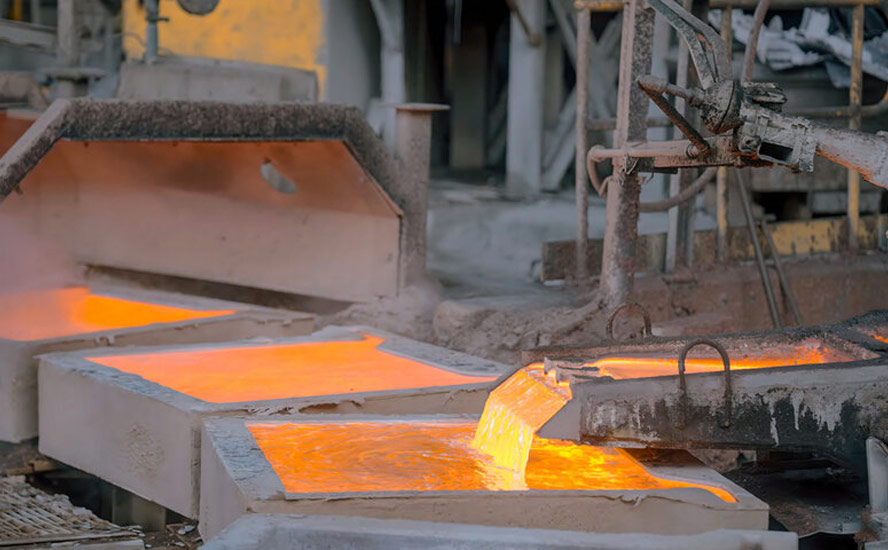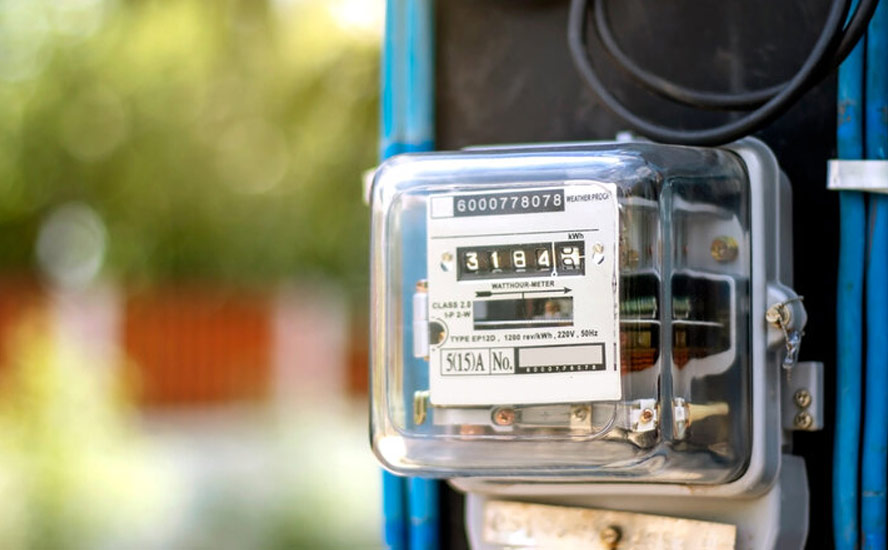Cannabis tester FluroTech is a market disruptor

2019.03.19
The legalization of cannabis in Canada – only the second country after Uruguay to do so – presents a huge business opportunity here and elsewhere. The global cannabis market is expected to hit $146 billion by the end of 2025. Most of the action is expected to be centered in North America.
For more on the blue-sky potential of the US cannabis market, read our ‘For Canadian cannabis companies, the US is the prize.’
Along with the sale of marijuana/ cannabidiol (CBD) products including dried material for smoking, paraphernalia and edibles, cannabis testing will be a key, and extremely lucrative, sub-market.
Currently there is no universal method for testing cannabis products. But as regulated cannabis markets continue to emerge in North America (Canada and 11 US states now have legal marijuana, sold for medicinal and recreational purposes), there is a growing need for a system of rapid and effective cannabis testing. The testing market is pegged at $300 million in Canada, just over double that in the United States, and $2.75 billion worldwide.

FluroTech
One company aiming to grab a piece of this lucrative trade is FluroTech (TSX-V:TEST, OTCQB:FLURF).
The Calgary-based company started about two and half years ago through a collaboration between the CEO, Danny Dalla-Longa, and the CTO, Dr. Elmar Prenner, a biochemistry professor at the University of Calgary who had been researching a drug testing device using fluorescence spectroscopy.
This technology employs a beam of ultraviolet light to excite the molecules of the compounds being tested, causing them to emit light.
Eyeing the marijuana and hemp markets in Canada that would spring forth from legalization, the pair decided to focus the development of the device on cannabis testing.

Together with Curtis Smith, the CFO, and Gary Jones, VP Business Development, the four brought the company public through a $9 million financing that closed in March. COO, Rex Kary, is the latest addition to the team.
FluroTech is the first-mover in this space with disruptive spectroscopy analytical testing devices. There are currently no public or private companies with similar technologies for cannabis testing.
The company’s revenue model involves selling testing devices to licensed cannabis producers, retailers, companies that do drug testing, and law enforcement agencies. The buyer would purchase a testing device plus a “scope” that slots into the device for each type of test – THC/CBD, pesticides, heavy metals, etc. Each test (“lab kit”) would be priced individually or bundled per month.
Why is testing important?
Like any food or beverage, the most important consideration in conducting commerce in that product is that it’s safe to consume. Cannabis products are no different, and the fact that one of those product families, marijuana, gives the user a high, adds an extra layer of responsibility on the part of growers and dispensaries to ensure that the product inside is a true representation of the packaging.
The whole point of legalization is to remove the black market in cannabis products, and while the illegal market has not yet been eliminated, a regulated market where products must be tested for sale is a marked improvement.
However, according to Kary the biggest problem with testing cannabis in Canada right now is the lack of consistency across testing laboratories. The country’s plus 150 licensed producers (LPs) must have their cannabis products tested by one of the 42 independent labs approved by Health Canada prior to sale. The labs screen for THC, CBD, pesticides and chemicals, heavy metals and mold.
The trouble is, each laboratory has its own testing protocol, meaning that the results between labs can differ significantly. That isn’t good for the grower, the dispensary or the user. Growers want assurance tests are accurate, dispensaries want a reputation for consistency and quality. Users of course, need that same assurance that what they think they are buying is what they’re getting.
FluroTech’s idea was to come to market with a testing kit that would provide consistency of results – something the whole cannabis industry could benefit from. But there’s another type of testing that wasn’t being done, that the company wanted to capitalize on: in-house testing.
Currently growers that want to test a crop as it’s being grown are only able to do so by sending samples to a licensed laboratory. FluroTech wanted to bring testing “in-house” to growers who could test frequently, thus improving the quality of the product and the LP’s operation.
“In-house testing is needed to perfect the craft, to put some precision around the agriculture. That’s the target market that we’re in,” said Kary, FluroTech’s CTO.
CompleTest™
The testing device developed by Dr. Prenner is called CompleTest™. It uses spectroscopy and fluorescence to measure the content of a given attribute including CBD, THC, pesticides and heavy metals. The device was recently commercialized.
A sample is liquified through a reagent solution, then run through the device. The sample can also be saliva, used for drug-testing motorists or employees, one of FluroTech’s four revenue streams discussed below.
Current cannabis testing equipment employs high performance liquid chromatography (HPLC). The often bulky device tests many molecules at once, versus CompleTest™ which functions by testing each variable separately. That makes it more accurate, reliable and repeatable than HPLC says Dalla-Longa, FluroTech’s CEO, noting it’s the one-size-fits-all HPLC testing protocol that leads to “cross-lab variability” in results.
“We’ve literally done thousands of tests where we’re getting the same result time and time again,” he explained. “The reason why HPLC has this variability factory is all of the inputs and calibration that are involved change from operator to operator, and the machines change. If you change a part in the machine, the result changes. That’s the issue that they have.”
Kary said because CompleTest™ tests each variable one at a time versus HPLC which tests everything at once, it is much more precise.
“Because we’re detecting one thing, we can do one thing very, very well and very, very accurately because that’s all we’re measuring,” he said. “When the user is using our device, the test is done and it says three parts per billion cadmium, or it says 19.82% THC. There is no interpretation. It’s a number that comes out that is mathematically produced within the software. It is extremely accurate.”

4 revenue streams
Cannabis growers
Unlike getting a sample tested in a lab, CompleTest™ can return a result within minutes, versus days or weeks. This is a big advantage to cannabis growers because it vastly reduces wait times. It also allows growers to test plants at any time during the growing cycle, not only the final stage when the product must be tested to meet Health Canada regulations before being sold. Frequent, regular testing enables growers to identify pests or contaminants early on, and to optimize their crops, making them more profitable.
Harvesting a marijuana batch at the perfect time increases the yield (the amount of crop compared to the amount seeded) by around 10%; missing that “sweet spot” costs the grower more in processing costs and revenues, because THC potency begins to drop quickly if left beyond the optimal harvest time and the plant is left in the flowering room longer than necessary. Customers generally pay more for a high-THC strain.
Hemp growers
These days it isn’t only marijuana for sale at dispensaries. A higher percentage of the cannabis market is being taken by CBD, the part of a cannabis plant’s extract that does not produce the “high”, but is rather used to treat anxiety, movement disorders, pain, etc. Of great interest to the dispensary and the CBD user is the ratio of THC to CBD – hence its importance for testing. CBD is often extracted from hemp.
The 2018 Farm Bill legalized hemp, opening up a large new market in the United States to Canadian cannabis/ CBD firms. Currently, TSX-listed firms are prohibited from setting up operations in the US, because cannabis is still illegal under federal statute. But the legalization of hemp also legalized CBD, meaning companies like FluroTech can now do it’s CBD testing business state-side. Nearly 7% of Americans are reportedly using CBD, used for its health benefits in everything from drops and oils, to creams, and even pet food.
“We can’t currently supply to what is the biggest market in the world, which is the US,” said Dalla-Longa. “With the Hemp Bill, we can go and start penetrating those markets. From our standpoint, hemp could very well be bigger than cannabis.”
Large-cap companies like Aurora Cannabis are reportedly buying up tracks of land to grow hemp.
Even better for FluroTech, there currently isn’t a test for CBD outside of laboratories; the company plans to target hemp growers for having the same in-house testing needs as cannabis producers – that is, for optimizing their crops.
CBD is a valuable hemp by-product. Hemp growers are motivated to produce CBD, but in doing so, the fibers also contain THC. The level of THC in a hemp crop is critical, because if it’s over 0.3% THC, the hemp is considered illegal. Ergo, hemp growers are a captive market for testing equipment.
“They want to use our test, first to determine what is the CBD level and what is the optimum time for growing and what is the best place to grow. But second, they want to prove that it is actually hemp,” Kary said.

He added that the company is currently researching how to refine its THC test to an accuracy level of under 0.3% THC.
Roadside/ workplace testing
One of the greatest concerns about cannabis legalization, from a public safety point of view, is consumers driving under the influence of THC.
The portability of CompleTest™ makes it ideal for law enforcement agencies looking for a means of roadside testing. While the Canadian government has approved one roadside drug testing unit that screens saliva, it is up to individual police forces to decide what kind of testing equipment they want to use.
One thing is for sure: the testing units will not be breathalyzers like the machines police officers carry to screen for impaired drivers. The federal government has mandated that the testing equipment must be saliva-based. The equipment must also be able to measure THC, cocaine, and methamphetamines.
But here’s where technology is running slightly behind law enforcement. The current saliva-based roadside test only has the capability of determining whether or not a driver has consumed THC. It can’t measure the amount of THC in a person’s system. FluroTech’s test can. The police officer would take a swab from a driver’s mouth, then the sample would be run through CompleTest™ to determine the amount of the drug that has been consumed. FluroTech is working towards getting a result within five minutes, making the device appropriate for roadside testing.
“We’re looking at being the guys in the van who quantify the THC, cocaine, methamphetamines,” said Dalla-Longa, adding that the government will likely approve up to five different roadside testing devices.
He also said that FluroTech sees its saliva-screening test as particularly applicable to worksites, that do drug testing and need to get the results quickly. Examples could include construction sites, forestry operations and oil exploration camps.
Biomarkers
Besides applications for growers, law enforcement and industrial drug testing, FluroTech is also envisioning CompleTest™ being used for “biomarking” whereby an attribute is placed into every plant grown by a licensed producer, that can be tracked throughout the plant’s life. Biomarking would allow customs agents and police to determine whether a plant was produced legally or on the black market.
Kary noted that biomarking could prove useful especially in situations like the current cannabis market where there’s a shortage of supply. An under-supply of cannabis means some illegal producers, and unscrupulous retailers, may try to pass off the illegal product as legal cannabis. If the product has been biomarked, it will show up in a test.
A biomarker can be visualized as a kind of “barcode” for cannabis products. The biomarker allows the plant to be tracked, all the way from a seedling to the point of consumption.
“We put a unique signature onto the plant or into the extract,” said Kary. “This signature is what could be purchased by any grower or any processor and it’s unique to them.”
Biomarking would help dispensaries to determine if the cannabis products they’re selling are legitimate – thus making them safer for consumers and taking away the liability of licensed producers should an illegal, harmful product be consumed. Law enforcement agencies – customs and police – could use biomarkers to enforce the Cannabis Act.
Importantly for the government, biomarking could also help to prevent missed revenue, from illegal cannabis that is not taxed.
FluroTech has successfully tested the biomarker in laboratories in up to 30 plants, and is looking at scaling up to see if it works in bunches of 150, 200, even 2,000 plants. At that point it will be ready for commercialization.
Catalysts
Getting into TEST at this early stage could prove to be a timely decision. The company has a number of targets it is planning to hit this year – all of which, in our opinion, could result in a significant stock re-rating.
FluroTech has ordered its first production run of 80 units, 70 of which will soon be ready for sale. The first 70 CompleTest™ devices will be sold to licensed producers in Western Canada the first half of the year. The plan is then to scale up to 200 units in the secondhalf, for sale to Eastern Canada, followed by the rest of Canada and a blitz of smaller “craft” growers that should take the company to the end of the year. After that, FluroTech will be looking state-side, in particular the lucrative California market; where all of Canada has +150 LPs, California has over 10,000!
Other catalysts include the launch of the pesticides test and the biomarker test, both expected later this year.
Conclusion
FluroTech is a start-up company with a disruptive cannabis testing technology. CompleTest™ promises to shake up the way the industry has conducted its testing, by offering growers the opportunity to test “in-house” rather than sending samples to a laboratory. This will not only return results much sooner, it will allow growers to test their crops frequently, at every stage of the growing cycle, thereby optimizing efficiency and maximizing profits.
I like the four revenue models. Diversity in a start-up or any company really, is a smart strategy. Here we have four ways to make money: cannabis growers, hemp growers, roadside testing and biomarkers. If one revenue stream is underperforming, there are three others that can make up for it.
I like that FluroTech offers a solution for roadside testing, which goes a step further than current technology, to measure a driver’s drug levels. This will help law enforcement to get convictions for those who foolishly “toke and drive”.
And I really like the biomarkers. This is an extremely clever way to track a cannabis product from seedling to the point of consumption. Just about all industry players can benefit from biomarking: licensed producers, retailers, consumers, police, and even the government, which represents (or is supposed to) Canadian citizens on which tax revenue from cannabis will be spent (or should be).
Finally, I notice that compared to its peers, TEST is undervalued. While a direct comparison is difficult, since there do not appear to be other companies that offer similar technology, the closest would be Cannabix (CNSX: BLO). Its signature product is a THC breathalyzer, which as mentioned above, is not permitted by the government for roadside testing. BLO has a current market capitalization of $150 million and trades at $1.48 a share (Monday close). Stock in TEST can be purchased for a third of BLO, $0.52 on Monday, and it has a market cap of $27 million.
This suggests to me that TEST might be undervalued by the market right now, considering its four revenue models and sophisticated testing technology, versus BLO’s one revenue model and a technology that cannot even be sold in Canada.
For all of these reasons I have TEST on my radar screen.
Richard (Rick) Mills
Ahead of the Herd Twitter
Ahead of the Herd FaceBook
Legal Notice / Disclaimer
This document is not and should not be construed as an offer to sell or the solicitation of an offer to purchase or subscribe for any investment. Richard Mills has based this document on information obtained from sources he believes to be reliable but which has not been independently verified. Richard Mills makes no guarantee, representation or warranty and accepts no responsibility or liability as
to its accuracy or completeness. Expressions of opinion are those of Richard Mills only and are subject to change without notice. Richard Mills assumes no warranty, liability or guarantee for the current relevance, correctness or completeness of any information provided within this Report and will not be held liable for the consequence of reliance upon any opinion or statement contained herein or any omission. Furthermore, I, Richard Mills, assume no liability for any direct or indirect loss or damage or, in particular, for lost profit, which you may incur as a result of the use and existence of the information provided within this Report.
FluroTech (TSX-V:TEST, OTCQB:FLURF) is an advertiser on Richard’s site aheadoftheherd.com.
Legal Notice / Disclaimer
Ahead of the Herd newsletter, aheadoftheherd.com, hereafter known as AOTH.Please read the entire Disclaimer carefully before you use this website or read the newsletter. If you do not agree to all the AOTH/Richard Mills Disclaimer, do not access/read this website/newsletter/article, or any of its pages. By reading/using this AOTH/Richard Mills website/newsletter/article, and whether you actually read this Disclaimer, you are deemed to have accepted it.



























